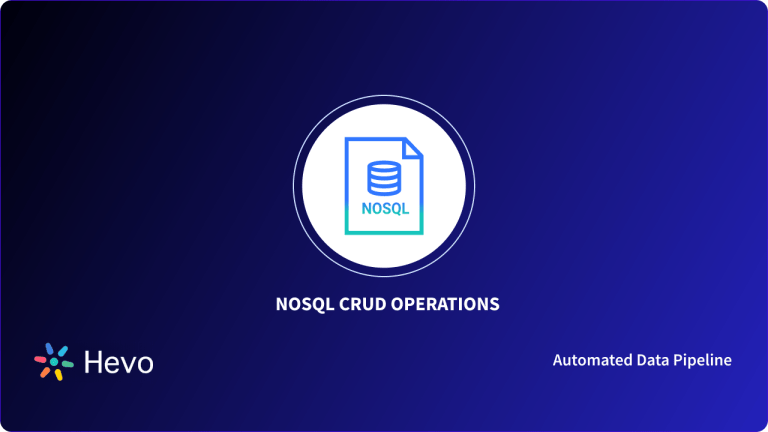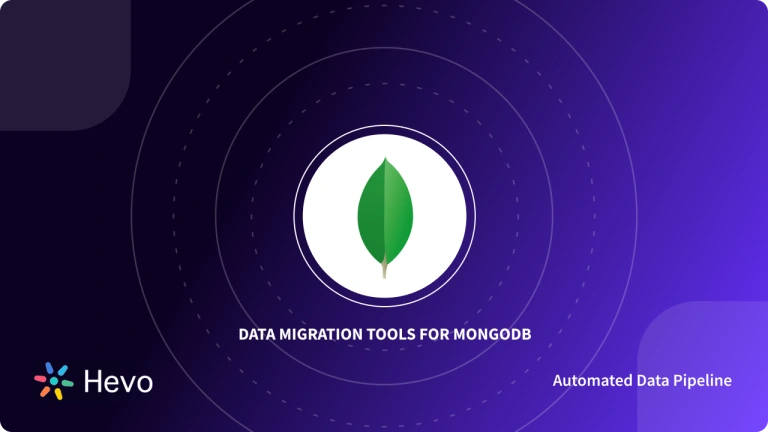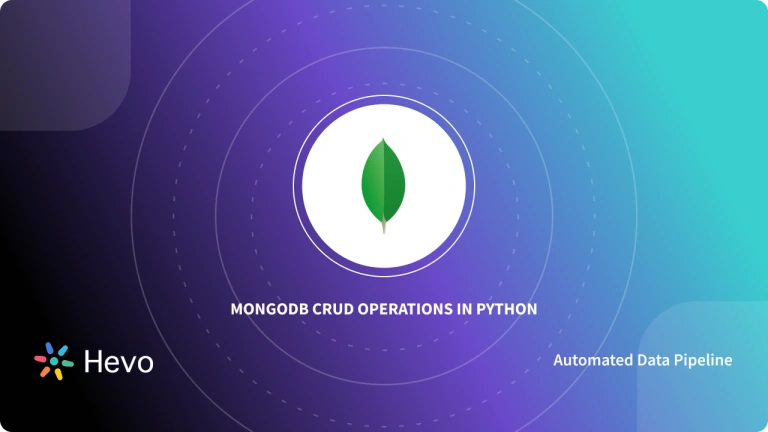Unlike traditional relational database management systems, MongoDB has a flexible schema and is highly compatible with Node.JS, a JavaScript runtime environment that makes backends efficient. Although Node.JS and MongoDB are highly compatible, there are some issues like abstraction failure.
The problem is dealt with using Mongoose, which is the middleware between MongoDB and Node.JS to ensure effective communication. With the assistance of Mongoose’s features like validators, plugins, and more, data management becomes more accessible and efficient.
In this article, you will learn how to use Mongoose CRUD operations to deal with the MongoDB database’s data efficiently.
Table of Contents
Prerequisites
Understanding of databases.
What is Node.JS?
Developed by Ryan Dahl in 2009, Node.js is an asynchronous server-side platform built upon Google Chrome’s JavaScript Engine (V8 engine). Node.js is an open-source JavaScript runtime environment mainly used for the backend development of the web applications that requires a fast, scalable, lightweight, and data-focused server.
Since it supports cross-platform, developers can run it on Microsoft Windows, Linux, and OS. The JavaScript libraries simplify the backend development of data steaming applications, single page applications (SPAs), and JSON APIs bases websites. It has a cluster module that manages load balancing for each and every active CPU cores and concurrently manages all the client-side requests efficiently.
All the APIs in the Node.JS library are asynchronous, meaning that the working of Node.JS is non-blocking and will never wait for an API to return data. Instead, Node.JS moves on to the following API and notifies the server to get the response of the previous API request made.
It uses a single-threaded model with an event looping mechanism to respond asynchronously to enhance the server by increasing its scalability and performance. With Node.JS, you can easily create dynamic page content to collect form data and perform various database operations like insert, delete, modify, etc.
What is MongoDB?
MongoDB is a NoSQL document-oriented database that stores data in a flexible and scalable manner so users can easily query or index the required data whenever needed. Developed in February 2009, the primary purpose of this open-source database was to store a large amount of data in the format of BSON (binary representation of JSON documents).
Traditional users store data in the form of tables with a fixed schema. In contrast, MongoDB provides a flexible schema to support the dynamic data of growing enterprise applications. It also offers official driver support for many popular software languages like C, C++, Ruby, Motor, Python, Java, PHP, Swift, Mongoid, Go, Node.JS, and more.
With Hevo Data, you can easily integrate MongoDB with a wide range of destinations. While we support MongoDB as sources, our platform ensures seamless data migration to the destination of your choice. Simplify your data management and enjoy effortless integrations.
Check out what makes Hevo amazing:
- It has a highly interactive UI, which is easy to use.
- It streamlines your data integration task and allows you to scale horizontally.
- The Hevo team is available around the clock to provide exceptional support to you.
With its automated data handling and no-code interface, Hevo makes building efficient pipelines effortless.
Get Started with Hevo for FreeKey Features of MongoDB
The horizontal scalability features of MongoDB, like data replication and sharding, provide its users with an intelligent operational data platform that helps them focus solely on their data to create meaningful insights. MongoDB replicates each write operation on the primary node and multiple secondary servers for data availability if the primary server crashes or fails.
A large amount of data is broken down into smaller parts called shards and is distributed equally across all these servers, and this process is called sharding. Data replication and sharding in MongoDB promote optimal load balancing that enhances better data management and performance of the database server.
Changing the structure of records is as simple as adding new fields or deleting existing ones (referred to as Documents by MongoDB). This MongoDB feature simplifies the representation of Hierarchical Relationships, Store Arrays, and other more complexes Data Structures. Many tech behemoths, including Facebook, eBay, Adobe, and Google, now use MongoDB to store massive amounts of data.
These features of the MongoDB database provided enterprises with better data availability and stability. MongoDB model indexes all the data effectively with the expansive range of indices and language-specific sorting algorithms for better execution and data retrieval.
What is Mongoose?
Mongoose is an Object Document Mapper (ODM) that is mostly used when the Node.JS server is integrated with the MongoDB database. It manages all the relationships between data, assists in validating schema, and translates objects in MongoDB. Mongoose provides good functionality when building and working with database schemas.
It is a JavaScript library that helps you create a model based on a particular schema. Then this model is mapped to a MongoDB document through the model’s schema specifications.
Mongoose can support eight different types of ‘SchemaTypes’: String, Number, Date, Buffer, Boolean, Mixed, ObjectId, and Array. It even has a wide range of methods to perform CRUD (create, retrieve, update and delete) operations on your data in the MongoDB database.
Key Features of Mongoose
Here are some features of Mongoose:
1) Middleware
Middleware, also known as pre- and post-hooks, are functions that provide control when the asynchronous methods are getting executed. Mongoose is the software between the operating system and the running application that enables data management and communication. It is established on the schema level and is beneficial for writing plugins. Mongoose has four types of middleware – document, model, aggregate, and query.
Each of these middleware types has a built-in method that helps users to interact with the MongoDB database via Mongoose. Mongoose is a middleware dealing with complex validation, eliminating dependent documents, making asynchronous defaults, and creating asynchronous functions for specific triggers.
2) Error handling
Developers can use Mongoose to connect with the MongoDB database and efficiently deal with errors. With the Mongoose connection, there can be two classes of errors, error on initiation and error after initiation. The mistake in the initial link occurs when the connection fails, Mongoose will not automatically try to reconnect again.
However, if the error is after the connection, Mongoose will attempt to reconnect with the MongoDB database. Error handling of Mongoose is easy and can be dealt with using an inbuilt function. You can also use try-catch statements along with async or await.
3) Validation
In Mongoose, validation is defined in the SchemaType and has a wide collection of built-in validation rules. For example, the required validator checks if a certain property is not empty. Developers can put validations on all the queries they use for inserting, deleting, or updating a record in the MongoDB database.
Mongoose, lets you put maximum and minimum validators on numbers, whereas, for Strings, there are enums, match, min length, and max length validators. The validations feature helps make error handling easier, reducing development time and effort.
Mongoose CRUD Operations
MongoDB and Node.JS are commonly used in a tech stack of MERN for developing robust and interactive web applications, where M and N represent MongoDB and Node.JS, respectively. Both technologies are highly compatible, but developers faced abstraction failure when they used Node.JS and MongoDB.
Mongoose was introduced as a middleware between NodeJS and MongoDB to deal with this issue. Developers were able to take advantage of Mongoose and define schema easily. Mongoose’s features like validations, populations, middleware, and more make it easy to use MongoDB methods.
In this article, you will learn how to perform Mongoose CRUD operations on the MongoDB database. Before you start, download MongoDB and Node.JS on your device. To use Mongoose, you must install the package via npm:
npm install mongoose --save.Then make a connection with the MongoDB database using mongoose.connect() method. Once you have made a successful connection, let us understand how to perform Mongoose CRUD operations.
1) Create
- Save method
To create new entries of JavaScript objects from an object function constructor, call the save() method on that object. This method will save the newly created document in the database.
#Mongoose CRUD Operations
doc.name = 'foo';
await doc.save();- Insert method
The two methods, insert() and insertMany() can be used to insert an array of records. The only difference is that the former returns the number of inserts and confirmation about the record inserted. In contrast, insertMany() returns the record id and inserted record.
#Mongoose CRUD Operations
User.collection.insert(
[ <document 1> , <document 2>, ... ],
{
writeConcern: <document>,
ordered: <boolean>
}
)
User.collection.insertMany(
[ <document 1> , <document 2>, ... ],
{
writeConcern: <document>,
ordered: <boolean>
}
)
- Create method
Similar to the save() method, even the create() method is used to create new model documents in Mongoose. However, it is shorthand to make one or more documents in the database
#Mongoose CRUD Operations
User.create([Newuser,Newuser1,Newuser2])
.then((data)=>{
resolve(data);
}).catch((err)=>{
reject(err);
})
2) Retrieve
Mongoose CRUD Operations gives you three simple ways to retrieve or read any data from the MongoDB database – find(), findOne(), and findById(). The find() method returns everything in the database that matches the query.
User.find([query],[callback])The findOne() method returns only the first matching record.
User.findOne([query],[fieldsToReturn],[callback])Lastly, the findById() method returns a single object in the MongoDB database based on the id you provide.
User.findById(id,[fieldsToReturn],[callback])3) Update
An update operation first searches for the queried record in the database, retrieves it, and then modifies it according to the developer’s need. In Mongoose CRUD Operations, you can use the findByIdAndUpdate() method to update a certain record by providing its record Id.
#Mongoose CRUD Operations
if(mongoose.Types.ObjectId.isValid(id)) {
User.findByIdAndUpdate(id,{$set:{name:user.name}},{new:true}) .then((docs)=>{
if(docs) {
resolve({success:true,data:docs});
} else {
reject({success:false,data:"no such user exist"});
}
}).catch((err)=>{
reject(err);
})
} else {
reject({success:"false",data:"provide correct key"});
}
For condition-based updating, you can use the update() method; you can even update multiple files by making the multi flag true.
User.update({_id:id},{$set:{name:user.name,state:user.state}},
{multi:true,new:true})
.then((docs)=>{
if(docs) {
resolve({success:true,data:docs});
} else {
reject({success:false,data:"no such user exist"});
}
}).catch((err)=>{
reject(err);
})
#Mongoose CRUD Operations4) Delete
In Mongoose CRUD Operations, there are two methods to delete or remove a record – remove() and findOneAndRemove(). While remove() deletes all the records from MongoDB that satisfy the given condition, the findOneAndRemove() method removes only one record based on the Id you give.
User.findByIdAndRemove(id,options,callback)Example Use Cases of Mongoose CRUD Operations
- User Management: Create, update, or delete user profiles in applications like social media platforms or e-commerce websites.
- Product Catalog: Manage products in an online store by adding new items, retrieving product details, updating prices, or removing outdated listings.
- Order Tracking: Track customer orders by creating new orders, updating their status, retrieving order details, or deleting canceled orders.
- Blog System: Manage blog posts, including creating new posts, fetching articles for display, editing content, or deleting outdated posts.
- Inventory Management: Maintain stock levels in a warehouse by adding new items, checking availability, updating quantities, or removing discontinued items.
Conclusion
In this article, you learned how to perform Mongoose CRUD Operations on the MongoDB database. MongoDB and Node.JS is the ideal solution for creating and managing large-scale web applications.
Along with these technologies, Mongoose is a good middleware as it improves performance and scalability through effective data management.
Using this tech stack of MongoDB, Node.JS, and Mongoose, enterprises can easily build a flexible, robust, and dynamic web application that can handle millions of users concurrently, that sounds good right, but what about the pipeline to transport data? This is where Hevo can change the game!
Hevo Data, A No-code Automated Data Pipeline provides you with a consistent and reliable solution to manage data transfer between a variety of sources and a wide variety of Desired Destinations with a few clicks.
Sign up for a 14-day free trial and simplify your data integration process. Check out the pricing details to understand which plan fulfills all your business needs.
FAQ on Mongoose CRUD Operations
How to implement CRUD operations in Mongoose?
Implement CRUD operations in Mongoose by defining schemas and models and using Mongoose methods like create(), find(), findByIdAndUpdate(), and findByIdAndRemove() to perform Create, Read, Update, and Delete operations.
How to create CRUD API in Node.js using MongoDB
Create a CRUD API in Node.js using MongoDB by setting up an Express server, connecting to MongoDB with Mongoose, defining models, and creating routes for each CRUD operation interacting with the database.
What are the CRUD operations?
CRUD operations refer to Create, Read, Update, and Delete, the four basic functions for database interaction.










